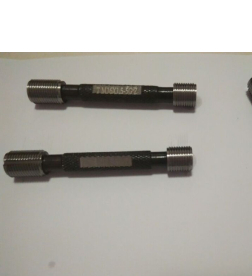дек. . 23, 2024 06:11 Back to list
different types of directional control valve
Different Types of Directional Control Valves
Directional control valves are essential components in hydraulic and pneumatic systems, as they dictate the flow direction of fluid within these systems. They play a crucial role in controlling machine movements and ensuring that processes operate efficiently and smoothly. Understanding the various types of directional control valves is vital for selecting the right valve for specific applications, ensuring optimal performance, and enhancing system reliability. This article discusses the different types of directional control valves, their functions, and their typical applications.
1. Spool Valves
Spool valves are among the most widely used directional control valves. They typically consist of a cylindrical spool that moves within a bore to block or allow fluid flow in various directions. The position of the spool determines the flow path. The most common configurations are two-way, three-way, and four-way valves.
- Two-way valves These valves have two ports (inlet and outlet) and are used to start or stop fluid flow. - Three-way valves These can either direct fluid from one input to one output or bypass it, making them suitable for controlling single-acting cylinders. - Four-way valves These valves are essential for controlling double-acting cylinders, as they allow fluid to flow in two different directions depending on the spool's position.
Spool valves are rated based on their size, pressure capabilities, and flow ratings, making them versatile for various applications.
2. Poppet Valves
Poppet valves operate differently than spool valves, employing a ball or cone-shaped plug that blocks flow when seated against a valve seat. When the valve is activated, the poppet moves away from the seat, allowing fluid to flow. They are commonly used in applications where a simple on/off operation is required.
Poppet valves are compact and can handle high-pressure systems, making them ideal for hydraulic circuits in machinery and equipment. They are often used in series configurations to control larger flows or more complex systems.
3. Rotary Valves
Rotary valves operate based on a rotating mechanism that controls fluid flow paths. These valves are often preferred in applications requiring continuous flow or very specific operational parameters. By rotating a disk or cylinder within the valve body, rotary valves can effectively manage multiple flow paths, making them suitable for more complex tasks.
different types of directional control valve

Commonly found in industrial automation systems, rotary valves are utilized in applications ranging from actuating pneumatic cylinders to controlling hydraulic motors. Their design allows for efficient space utilization and flexibility in design layouts.
4. Electric Directional Valves
With the advent of modern technology, electric directional control valves have gained popularity. These valves integrate electric solenoids to control fluid flow rather than manual or pneumatic actuators. Electric directional valves provide precise control and can be automated as part of a comprehensive control system.
These valves are especially useful in applications where precise positioning is critical, such as robotic systems, automated machinery, and process control systems. They offer the added benefit of integrating with programmable logic controllers (PLCs) for enhanced operation.
5. Mechanical Control Valves
Mechanical control valves feature levers, knobs, or pedals that manually control the valve mechanism. These valves are straightforward and are often used in applications requiring manual control of fluid flow. Operators can adjust the position of the control mechanism to achieve the desired flow through the system.
Typically found in smaller or less complex systems, mechanical control valves offer a high level of direct control and can be essential in applications such as mobile equipment where manual intervention is necessary.
6. Logic Valves
Logic valves are another specialized type of directional control valve that operates based on specific conditions rather than direct input from an operator. They are used to create complex control sequences by responding to pressure or flow changes in the system. Logic valves can enhance system functionality by enabling multiple actions based on the conditions present in hydraulic or pneumatic circuits.
Conclusion
Directional control valves are fundamental to the operation of hydraulic and pneumatic systems, with various types designed to meet specific operational needs. Understanding the differences between spool valves, poppet valves, rotary valves, electric valves, mechanical control valves, and logic valves allows engineers and technicians to select the most suitable valves for their applications. By choosing the right type of directional control valve, it is possible to maximize system efficiency and reliability, ultimately contributing to better performance in industrial and commercial settings.
-
thread-plug-gauge-our-promise-of-measurement-excellenceNewsAug.22,2025
-
gauge-pin-class-reflecting-quality-legacyNewsAug.22,2025
-
check-valve-types-for-high-rise-buildingsNewsAug.22,2025
-
water-control-valve-for-irrigation-systemsNewsAug.22,2025
-
gate-valve-with-soft-seal-technologyNewsAug.22,2025
-
y-type-strainer-for-oil-and-gas-applicationsNewsAug.22,2025
Related PRODUCTS









